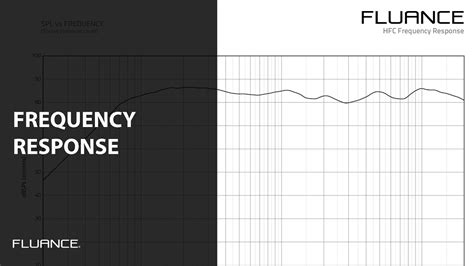How To Read Frequency Response Graph
Ronan Farrow
Apr 02, 2025 · 3 min read

Table of Contents
How to Read a Frequency Response Graph: A Comprehensive Guide
Understanding frequency response graphs is crucial in various fields, from audio engineering and electrical engineering to mechanical engineering and even biology. These graphs visually represent how a system or component responds to different frequencies of input signals. This guide will walk you through interpreting these graphs effectively.
Understanding the Axes
Before diving into the interpretation, let's clarify the axes of a typical frequency response graph:
-
Horizontal Axis (X-axis): Frequency: This axis represents the frequency of the input signal, usually expressed in Hertz (Hz), kilohertz (kHz), or megahertz (MHz) depending on the application. It shows the range of frequencies the system is being tested with.
-
Vertical Axis (Y-axis): Gain or Amplitude: This axis represents the system's output in response to the input frequency. It can be expressed in several ways:
- Decibels (dB): A logarithmic scale commonly used to represent the ratio of output to input power or amplitude. A positive dB value indicates amplification, while a negative value indicates attenuation. 0 dB usually signifies no change in amplitude.
- Linear Scale: This displays the output amplitude directly, often as a voltage or current.
Interpreting the Graph's Shape
The shape of the frequency response graph reveals crucial information about the system's behavior:
Flat Response:
- Ideal Scenario: A perfectly flat response indicates that the system amplifies or attenuates all frequencies within the measured range equally. This is often the desired outcome for audio systems aiming for a neutral sound reproduction.
Peak or Resonance:
- Sharp Increase: A sharp peak indicates a frequency at which the system resonates, leading to a significant amplification of that specific frequency. This can be desirable in some applications (like musical instrument design) but undesirable in others (like audio speakers where it can lead to distorted sound).
Dip or Notch:
- Significant Attenuation: A dip shows a significant reduction in the system's output at a particular frequency. This is sometimes used intentionally to filter out unwanted frequencies (like noise cancellation).
Roll-off:
- Gradual Decrease: A gradual decrease in amplitude at higher or lower frequencies is called roll-off. This signifies the system's limitations in handling extreme frequencies. The steepness of the roll-off indicates the system's bandwidth. A steeper roll-off implies a narrower bandwidth.
Bandwidth:
- Range of Frequencies: Bandwidth refers to the range of frequencies over which the system's response remains relatively flat (within a specified tolerance, often ±3dB). It's a crucial specification for many systems. A wider bandwidth generally indicates better performance.
Key Considerations When Analyzing
-
Units: Always pay close attention to the units used on both axes. Understanding the scale is fundamental to accurate interpretation.
-
Context: The significance of the graph's shape depends entirely on the system being analyzed. A peak might be beneficial for a musical instrument but detrimental for a communication system.
-
Specifications: Compare the measured response to the system's specifications. Deviations can indicate problems or require adjustments.
Practical Applications
Frequency response graphs find application in numerous areas:
- Audio Engineering: Analyzing speaker systems, microphones, and audio equipment.
- Electrical Engineering: Characterizing amplifiers, filters, and communication channels.
- Mechanical Engineering: Evaluating the vibration characteristics of structures and machinery.
- Control Systems: Designing feedback systems to maintain stability and performance.
By understanding the fundamental components and interpreting the shape of the graph, you can gain valuable insights into the performance and behavior of any system under analysis. Remember to always consider the context and specifications when drawing conclusions.
Featured Posts
Also read the following articles
| Article Title | Date |
|---|---|
| How To Remove Valve Stem Seal | Apr 02, 2025 |
| How To Style A Quarter Zip Womens | Apr 02, 2025 |
| How To Save A Dying Tree From Lack Of Water | Apr 02, 2025 |
| How To Shield A Guitar | Apr 02, 2025 |
| How To Tell Fake Prada Sunglasses | Apr 02, 2025 |
Latest Posts
Thank you for visiting our website which covers about How To Read Frequency Response Graph . We hope the information provided has been useful to you. Feel free to contact us if you have any questions or need further assistance. See you next time and don't miss to bookmark.
